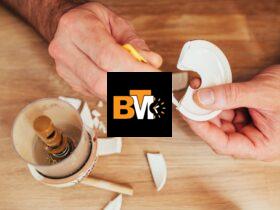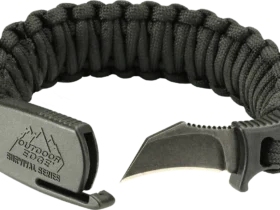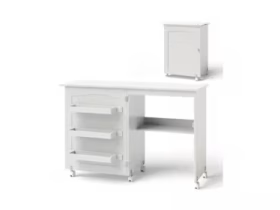Preparing Your Family Camping Trip
Getting ready for a family camping trip involves making smart choices and packing the essentials. Picking the right campsite, gathering necessary gear, and packing suitable clothing are all crucial steps to ensure a fun and safe adventure.
Choosing a Campsite
When selecting a campsite, think about what will best suit your family’s needs and interests. Consider the type of environment, such as a forest, lake, or mountain area. Check for amenities like restrooms, picnic tables, and fire pits.
Research the activities available nearby, such as hiking trails or fishing spots, that would be fun for your family. Safety is also important, so read reviews to learn if the site is secure and well-maintained. Reservations might be required, so book your spot in advance to avoid disappointment.
Essential Camping Gear
Your camping experience will be smoother with a good checklist of essentials. A sturdy tent big enough for everyone ensures comfort. Sleeping bags, preferably those suitable for the expected weather, keep you warm.
Don’t forget a basic first aid kit for minor injuries and a reliable flashlight or lantern for nighttime. Cooking supplies like a portable stove or grill make meal prep easier. Food and water should be enough for the duration of the trip, with extras in case of emergencies. Keep it simple but thorough to avoid forgetting critical items.
Packing the Right Clothing
Packing the correct clothing ensures you’re ready for the weather and activities during your trip. Begin with layers, allowing you to add or remove clothing to stay comfortable. A waterproof jacket is essential to protect against rain or wind. Comfortable shoes or boots are crucial if you plan on hiking or exploring.
Consider the temperature during the day and night, and pack accordingly. Don’t overlook hats or sunglasses for sun protection and cozy pajamas for cooler nights. Bringing a swimsuit might be a good idea if water activities are planned. Make sure everyone in the family has enough clothing without overpacking.
Setting Up Camp
When setting up camp, focus on pitching your tent securely, organizing the campsite efficiently, and ensuring safety with essential first-aid measures. Proper preparation can make your camping adventure smooth and enjoyable.
Pitching Your Tent
The first step is finding level ground, away from any potential hazards like falling branches or rising water. A flat surface ensures comfort during sleep and prevents the tent from sliding around. Stake down your tent corners, using a mallet if the ground is tough.
Consider using a ground tarp under your tent. It protects from moisture and provides extra insulation. Make sure your tent is well-ventilated to reduce condensation. Double-check that zippers and seams are closed properly to keep insects and rain out.
Organizing the Campsite
Begin with setting up a central area for cooking and socializing. Keep food and scented items away from the sleeping area to avoid attracting wildlife. Use a camp stove or fire pit safely and ensure it’s a fair distance from tents.
Put together a clean area to store tools and gear. Keeping your campsite tidy helps prevent accidents and misplaced items. Assign specific areas for different activities, like cooking and washing, and keep pathways clear of obstacles.
Safety Measures and First Aid
Camping safety should always be a priority. Start with packing a comprehensive first-aid kit. Include essentials such as bandages, antiseptics, pain relievers, and any personal medications. Educate everyone on how to use these supplies.
Establish a safety plan in case of emergencies. Share your camping location with someone outside your party, and have a reliable way to communicate. Stay aware of the local wildlife and weather conditions.
Ensure everyone knows basic first aid, like how to treat minor cuts or sprains. Familiarity with these protocols adds security to your camping trip.
Cooking and Meal Planning
Camping provides a great opportunity to enjoy delicious outdoor meals. It’s crucial to plan wisely, considering everyone’s tastes and how to store food securely.
Family Camping Meals
When planning meals for a camping trip, involve the whole family in selecting favorites. This ensures everyone is happy and excited about mealtime. Breakfast could include easy-to-cook foods like oatmeal, pancakes, or scrambled eggs. For lunch, think about sandwiches, wraps, and fresh fruits. Dinner might be more substantial, with grilled meats or veggies and foil-packet meals.
Prepare a meal plan before heading out. This helps avoid unnecessary stress and ensures you have all the needed ingredients. Bring along a portable stove or grill as these are important pieces of camping gear that make cooking easier while camping.
Storing Food at Camp
Proper storage is essential to keep your food fresh and safe from wildlife. Use coolers with plenty of ice packs for items that need to stay cold. Consider storing dry goods and snacks in airtight containers to prevent spoilage and keep them dry.
Hanging food from a tree in bear-proof bags or using a locked box can prevent animals from accessing your supplies. Remember to clean up after every meal and store food away from your sleeping area. This not only protects your meals but also keeps your camping area safer.
Activities and Entertainment
When you go camping with your family, filling your days with fun activities and evening entertainment helps create unforgettable memories. From exciting hikes to cozy campfire tales, there’s plenty to enjoy.
Hiking and Exploring
One of the best parts of camping is the chance to explore nature. Hiking is a fantastic way to get everyone moving and enjoying the great outdoors. Choose trails that match your family’s abilities. You can involve the kids by having them pick leaves or rocks and see who collects the most.
Bring a map or use trail apps to make the adventure more interactive. While on the trail, take breaks to enjoy a picnic or snap photos of wildlife. Be sure to carry plenty of water and snacks. Exploring safely and responsibly protects the environment and ensures a fun time for everyone.
Camping Activities for Kids
Camping offers lots of activities to keep kids entertained and engaged. Create a nature scavenger hunt with a list of items like pine cones, feathers, and interesting stones. Crafting with found objects can also spark creativity.
Organize simple games like tag or hide-and-seek in your camping area. You might even introduce them to safe outdoor skills, such as setting up a simple tent or identifying stars. These activities not only keep kids busy but also help them build a love for the outdoors.
Evening Campfire Stories
After a day of activities, settle down by the campfire for some storytelling. Classic tales and ghost stories create a cozy and exciting atmosphere. Encourage each family member to contribute their own story, whether it’s a made-up adventure or something funny that happened during the day.
Include marshmallow roasting for s’mores as you listen to the stories. If you have young children, consider choosing tales that are more imaginative and less scary. Sharing stories helps strengthen bonds and create a sense of togetherness, making it a staple of your camping adventure.
Respecting Nature
When camping, respecting nature ensures not only your enjoyment but also the preservation of the environment for others. It involves practicing Leave No Trace principles and understanding camping guidelines in national and state parks.
Leave No Trace Principles
Leave No Trace is about minimizing your impact on nature. Follow these key points to help preserve the environment:
- Plan Ahead: Know the area and weather. This helps you prepare properly and avoid damage or risks.
- Stay on Trails: Walking on established paths prevents damage to plants and wildlife habitats.
- Dispose of Waste Properly: Pack out everything you bring in, including garbage and personal hygiene products. Leave the campsite cleaner than you found it.
- Respect Wildlife: Enjoy watching animals from a distance. Never feed them, as it can disrupt their natural behavior.
- Minimize Campfire Impact: Use a camp stove or established fire rings. Fires should be small and completely out when you leave.
Camping in National and State Parks
Camping in national and state parks offers a chance to reconnect with nature. Parks often have specific rules to protect natural resources:
- Permits and Reservations: Many parks require permits or reservations. This helps manage visitor numbers and reduce environmental strain.
- Follow All Park Rules: Rules may include sticking to designated campsites, respecting campfire regulations, and maintaining quiet hours. This is important for safety and enjoyment for all.
- Watch for Signs and Information Boards: They provide important information about local wildlife, hazards, and features.
By following these guidelines, you help protect these beautiful spaces for future campers.
Comfort and Convenience
Camping with your family can be a fun adventure, but ensuring comfort and convenience makes the experience unforgettable. Focus on suitable sleeping arrangements and gear to simplify your trip, making sure everyone’s needs are met.
Choosing the Right Sleeping Arrangements
A restful night’s sleep is important while camping. Sleeping pads or air mattresses offer extra comfort. Air mattresses can be a bit bulkier but provide a cozy, bed-like feeling. They’re perfect for families who enjoy a touch of glamping.
Consider size and inflation options for convenience. Sleeping pads are lighter and easier to pack, making them ideal for families who want to travel light. Use bag dividers for privacy, especially in tents with multiple rooms. If possible, test sleeping options beforehand to see which suits your family best.
Convenience Gear to Consider
Convenience gear can simplify camping. Consider bringing camp chairs so everyone has a comfy spot to relax around the fire. Lightweight, foldable chairs are easy to pack and set up.
For personal needs, a portable toilet adds comfort, especially with young children. Various light and portable models fit well in camping setups. Lanterns or headlamps ensure you have light when you need it, adding a sense of security. Always match the gear to your family’s preferences, enhancing the camping experience.







Leave a Reply